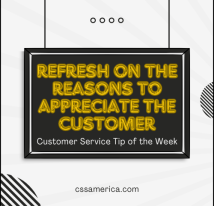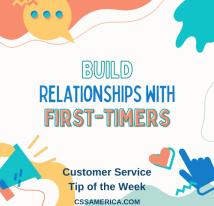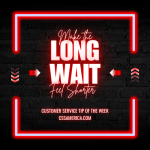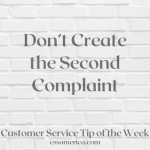
I’ve been in some meetings with sales professionals where they describe the need to “find the prospect’s pain point.” Once you find their source of pain, then you can suggest a product the prospect can buy or a service they can sign-up for that will alleviate the pain.
In customer service, we view pain differently. True, it’s often that we also seek the point of pain, but we’re not trying to acquire the new customer. We have the customer. We want to keep them, and usually the pain that the customer is feeling is pain that our organization has somehow inflicted. So instead of the sales focus of getting the customer to take action, in customer service, we’re usually the ones to take action for the customer.
It’s a different approach and a different action for a different result.
For customer service, we have to identify their pain. We then implement a remedy in order to keep them for the long-term.
Before we can keep them for the long-term, however, we have to do two things. First, identify their pain. This is where the organization needs the research strategy that answers key questions such as “What is your biggest frustration?” or “What one thing could we do to make this a great experience?” or “What matters most to you when you determine whether to return or recommend our company to others?”
At the same time, every employee needs the habit for seeking the customer’s opinion, since by far the most opportunities for customer feedback are found in those daily Moments of Truth. Employees need to get in the habit of asking “How was your experience today?” or “Did you get your question answered?” or “Is there anything we can do to better serve you?”
From corporate strategy to employee habits, there needs to be a common focus on asking the customer about their experience.
To keep customers for the long-term and relieve their pain, from company-to-employee, first seek the customer’s opinion.
Signup for FREE Tips! Contact Us More Resources for You Visit Our Home Page























